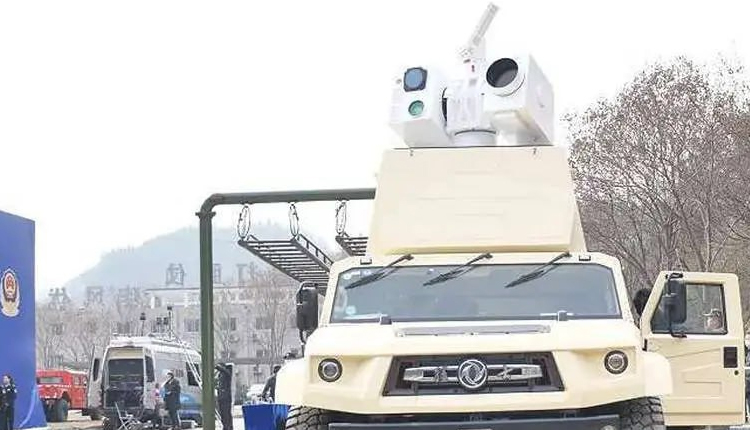Kiev: A viral video showed Russia using China’s Low-Altitude Laser Defending System (LASS) to shoot down Ukrainian drones, raising hopes and fears about India’s defence landscape.
Russia’s Nomad special forces unit has been using the Chinese-built LASS (Silent Hunter) in its efforts to neutralise Ukrainian drones during the conflict. The system, which is remarkably similar to a Chinese Shen Nung 3000/5000 that China exported to Iran in the past, is designed to take down low-flying UCAVs using a 10-30 kw laser. Footage posted on pro-Russian Telegram channels on May 31, 2025, of the system burning holes through a metal plate and shooting down drones confirmed that it had been used in Ukraine, the first documented case.
LASS, built by the Chinese Academy of Engineering Physics, has a 5-kilometer detection range, and the distance to destroy targets is within 1.5 kilometres, providing a cheaper alternative to missile-based defence systems. Its mobility—it can be mounted on trucks or containers—also gives it swift deployment and is thus a resonant tactical instrument in contemporary armed conflict. China’s exporting the technology to Russia comes after Iran received similar equipment in October last year, in an indication of Beijing increasingly turning to arm allies.
It is a double-edged story for India. As Russia’s long-time defence partner, India could benefit if Moscow shared this cutting-edge technology, having previously collaborated on projects like the BrahMos missile. However, the system’s origin in China has raised concerns, particularly in light of the perceived dangers Pakistan faces from its confrontation with India, which have intensified since China’s Operation Sindoor.
“The system seen in Russian service is very similar to the Chinese Shen Nung 3000/5000 anti-drone laser,” according to Fabian Hinz, a research fellow at the International Institute for Strategic Studies. Posts on X reiterated this point, noting that Russia has employed the system in response to Ukraine’s drone offensives. But the technology is not without its limitations: its range is limited, bad weather such as fog or rain can degrade the technology’s performance, and extended use can risk overheating.
India has progressed in Directed Energy Weapons (DEWs), whose 30 L KW level MK-II(A) Laser was successfully tested on April 13, 2025, capable of neutralising drones 4-5 km away. However, India is in its infancy age when it comes to its systems compared to China’s LASS, which is fully operational now. The world is witnessing a fierce competition for laser weapons, with Israel’s Iron Beam and U.S. systems such as HELIOS actively participating.
While Russia’s deployment of China’s laser technology in Ukraine represents a pivot to directed-energy weapons in contemporary warfare, this gives India an opportunity to enhance its defence partnership with Russia, yet it also highlights the urgency for it to step up its own DEW capabilities. Amid China’s influence across the region, India, however, must play this high-tech arms race game to ensure the security of its borders.



Comments are closed.